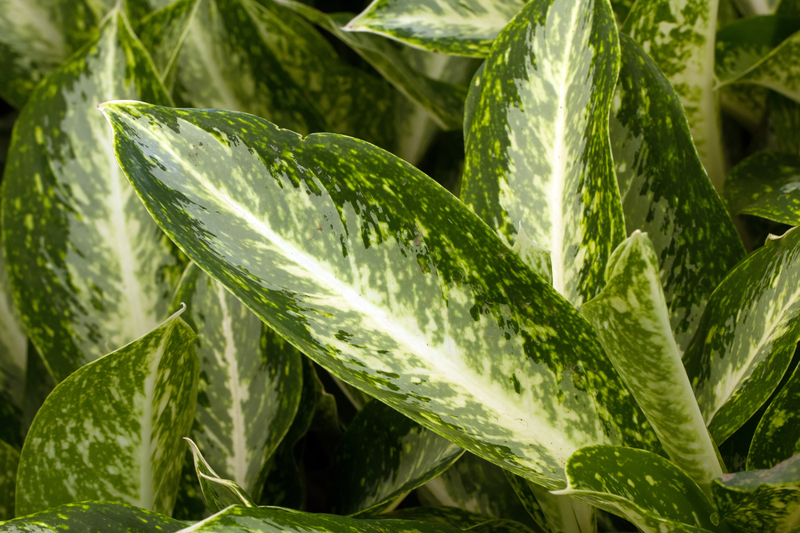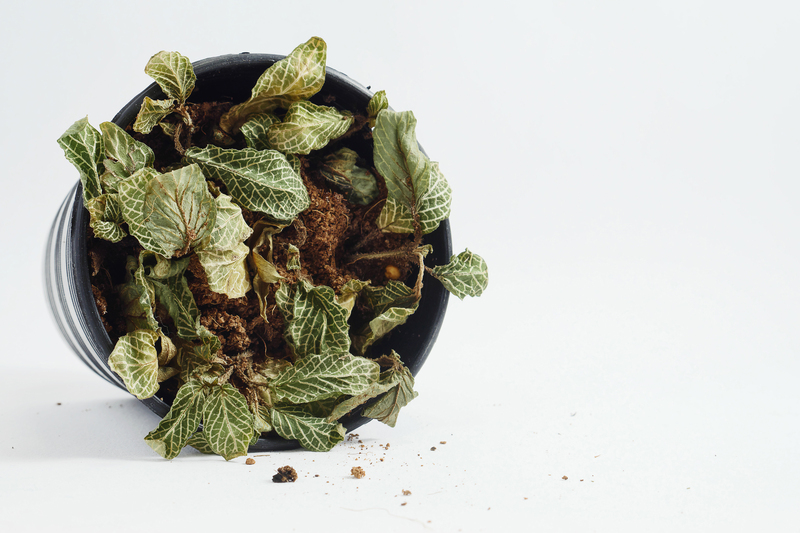Crafting the Ideal Hedge: Trimming Techniques for Beauty and Function
Posted on 27/09/2025
Crafting the Ideal Hedge: Trimming Techniques for Beauty and Function
Hedges are more than just boundaries; they serve as living walls that enhance privacy, define spaces, and bring aesthetic appeal to gardens and landscapes. Crafting the ideal hedge requires a blend of art and science--balancing aesthetics with function, plant health with the desired shape, and regular hedge maintenance with long-term landscaping goals.
This comprehensive guide will walk you through the essential hedge trimming techniques to achieve both beauty and function in your outdoor space. We'll touch on everything from species selection to seasonal timing, from tool choice to advanced shaping methods, ensuring your hedges thrive year after year.
Why Hedges Matter: Beauty and Function in Your Landscape
Before diving into specific techniques, understanding the role of hedges in a landscape is important. Hedges aren't just decorative--they play vital functional roles:
- Privacy: Provide natural screens, shielding your property from neighbors or passersby.
- Windbreaks: Protect delicate plants and structures from harsh winds.
- Noise Reduction: Dampen street or neighborhood noise effectively.
- Wildlife Habitat: Offer shelter and food for birds, insects, and small mammals.
- Visual Definition: Mark boundaries and create visual interest.
- Seasonal Color & Texture: Enhance gardens with year-round beauty.
Well-crafted hedges can transform an ordinary space into an elegant retreat--but the secret lies in consistent, skillful trimming and shaping.

Key Steps to Crafting the Perfect Hedge
Selecting Hedge Species for Your Needs
The journey to an ideal hedge starts with the right plant selection. Not all hedges respond equally to trimming, so it's crucial to choose species that match your desired height, density, and maintenance level.
- Evergreens (e.g., Boxwood, Privet, Yew): Provide year-round foliage and privacy, respond well to frequent shaping.
- Deciduous shrubs (e.g., Hornbeam, Beech): Offer beautiful spring blooms or fall color, can handle bold pruning.
- Flowering hedges (e.g., Forsythia, Hydrangea): Add seasonal beauty but require careful timing to avoid cutting off blooms.
Tip: Always consider your climate, soil, and sunlight when choosing hedge plants.
Essential Tools for Hedge Trimming
A healthy, beautiful hedge relies on the right trimming equipment:
- Manual hedge shears: Offers precision cuts, ideal for detailed shaping and smaller hedges.
- Electric or gas trimmers: Speed up trimming for large or extensive hedges.
- Pruning loppers: Perfect for cutting thicker branches or rejuvenating older hedges.
- Quality gloves and eye protection: Ensure safety during all trimming tasks.
Keep tools clean and sharp for crisp cuts that heal quickly and minimize disease risk.
The Science of Trimming: When & How Often to Prune
The Best Time to Trim Hedges
The timing of your hedge trimming can determine how well the plants grow and look:
- Formal evergreen hedges: Trim two to three times a year. The main trim is typically in late spring or early summer, with light trims in late summer and early autumn.
- Deciduous hedges: Cut once annually, usually in late winter or early spring before new growth emerges.
- Flowering hedges: Prune right after the bloom period to preserve flowers for the next year.
Note: Avoid trimming in excessively hot or dry weather, as this can stress the plants.
How Often Should You Trim?
The frequency depends on the plant species and the formal look you desire:
- Tightly manicured, formal hedges: Require trimming every 4-6 weeks during the active growing season.
- Informal or natural hedges: Minimal shaping, perhaps once or twice a year, just to encourage healthy growth and control size.
Proven Hedge Trimming Techniques
Basic Shaping for Strong, Healthy Hedges
Begin with a strong framework. For young plants, pinch or lightly trim tips to encourage bushiness. As the hedge fills out, use the following techniques:
- **Taper the sides**: Keep the base wider than the top – this allows sunlight to reach all parts of the hedge and prevents thinning at the bottom.
- **Flat or gently rounded top**: Avoid domed shapes for hedges in snowy climates, as heavy snow can break branches.
- **Use guide strings or stakes**: For formal hedges, stretch a string along the desired line at the top and sides to guide your trimming.
- **Work from the bottom up**: This approach offers better control and visibility as you trim upwards.
Advanced Trimming for Formal Hedges
If you seek that impressive, geometric look, try these tips:
- Box hedges: Trim straight lines for sharp angles and clear borders.
- Topiary shapes: Use frames or templates to create balls, spirals, or animals--patience and practice are required!
- **Layered hedges**: Staggered heights or multiple rows add depth and dimension to your garden design.
Techniques for Informal Hedges
Not all hedges need rigorous shaping! For a more naturalistic look:
- Follow the plant's natural growth habit, only removing dead, diseased, or crossing branches
- Trim lightly to encourage air flow and sunlight penetration, which reduces disease risk
- Allow flowering and fruiting for maximum wildlife value
Common Hedge Trimming Mistakes to Avoid
Even experienced gardeners can make errors when shaping hedges. Watch out for these pitfalls:
- Trimming at the wrong time: Can result in lost blooms, reduced growth, or winter damage.
- Cutting too much at once: Severe pruning can stress plants and inhibit regrowth.
- Neglecting the base of the hedge: Leads to "legginess" – thin, woody lower growth with a dense top.
- Improper tool use: Dull blades crush stems, encouraging disease.
- Failure to clean up debris: Leaves and cuttings left behind can harbor pests and fungi.
Ensuring Hedge Health: Aftercare and Ongoing Maintenance
Post-Trimming Care
Once you've finished trimming, give your hedges the care they deserve:
- Water deeply, especially in dry weather, to help plants recover.
- Mulch the base with organic matter to conserve moisture and suppress weeds.
- Fertilize lightly in early spring to promote lush, healthy growth.
- Monitor for signs of disease or pest infestation, especially after annual trims.
Rejuvenating Old or Neglected Hedges
All is not lost if your hedge is leggy, sparse, or overgrown!
- Hard pruning: Drastically cut back hedge (best for robust species like privet or yew) in early spring, allowing young shoots to fill out.
- Selective thinning: Gradually remove older, thick branches to encourage new inward growth.
- Layering or replanting: For severely damaged plants, consider propagation or refresh with new plants for continuity.
The Aesthetic Edge: Creative Ideas for Beautiful Hedges
Mixing Hedge Species
For year-round appeal, create mixed-species hedges combining evergreens and flowering shrubs. Varied foliage color, texture, and seasonal bloom times increase visual interest.
Adding Accents
- Incorporate gates or arches into hedges for dramatic entrances.
- Frame focal points (such as statues or fountains) for a designer touch.
- Use lighting to highlight structure and form at night.
Encouraging Wildlife
Leave sections of informal hedge untrimmed, or use berry-producing shrubs as part of the hedge. Birds, pollinators, and other wildlife will thrive!

Frequently Asked Questions About Trimming and Shaping Hedges
How can I achieve perfectly straight hedge lines?
Use tight strings and stakes at the desired height or level as visual guides. Trim carefully along these lines, stepping back often to check for symmetry.
How do I trim a hedge that is much too tall?
For most species, reduce hedge height gradually over a few seasons, cutting no more than one-third at a time to minimize shock. For very overgrown hedges, consider renewal pruning or replacing sections if necessary.
Is it possible to shape a hedge into curves or unusual forms?
Yes! Topiary pruning is an advanced skill, best started with malleable species like boxwood or yew. Use wire forms, cardboard templates, or gradual freehand shaping, cutting only a little at a time to refine the form.
Can I trim my hedges in fall or winter?
Major trimming is best avoided in late fall or winter, as cuts may not heal well before winter. Light shaping is possible for evergreens in mild climates, but save major pruning for late winter or early spring.
My hedge looks thin and woody at the bottom. What should I do?
This is a common hedge problem. The solution is to taper the hedge sides, allowing more sunlight to reach the base. Over time, gentle trimming will encourage fuller growth lower down. For badly legged hedges, try renewal pruning as described earlier.
Conclusion: Your Hedge as a Living Work of Art
Crafting the ideal hedge is an ongoing process that blends patience, planning, and regular attention. With the right trimming techniques, species choices, and creative ideas, your hedge can become a central feature in any landscape--offering privacy, structure, beauty, and even wildlife habitat.
Remember: each hedge is unique. Whether formal and geometric or wild and whimsical, the rewards of a well-made hedge--and the satisfaction of watching it grow and thrive--are well worth the effort. So grab your shears, set your sights on your dream design, and start shaping your own ideal hedge today!
For more expert advice and inspiration for your next landscaping project, bookmark this guide and revisit whenever your living boundaries need a refresh.

